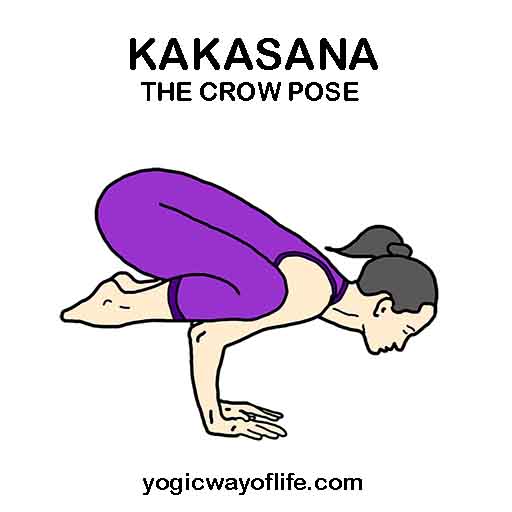Kakasana or the Crow Pose looks like a crow pecking on its food. In Sanskrit, Kaka means crow and Asana means pose. It is a good arm-balance pose for beginners. Kakasana strengthens the arms, wrists and shoulders and develops coordination and balance.
To perform Kakasana, one needs good strength of the wrist, arms and shoulders and a good sense of balance to maintain the position for long time.
How to do Kakasana (The Crow Pose)?
- Squat on the floor with legs slightly apart.
- Place the hands on the floor and let the palms feel the floor.
- Raise the heels and balance yourself on the toes.
- Slowly bend forward and shift the weight of the body to the palms.
- Lift yourself up using the palms. Keep the elbows bent. The two legs are bent and raised above the ground. Place the two knees outside the upper arm for support. Maintain your balance in this position.
- Now the entire weight of the body will rest on the palms. The elbows will remain bent.
- Retain the breath in the final position. Maintain this position for as long as possible. Your concentration should be on maintaining the balance of the body.
- To release the pose, return to the initial squatting position and breathe normally.
- Repeat this as many times as you are comfortable.
Benefits of Kakasana (The Crow Pose)
- Kakasana strengthens the wrists, arms and shoulders.
- It improves the sense of balance as it requires sufficient nervous coordination.
- It can remove tension and anxiety.
- Kakasana tones the organs in the abdomen and improves digestion.
- It strengthens the core muscles.
Contraindications for Kakasana (The Crow Pose)
- Those with high blood pressure should not do this pose as the pressure on the chest can constrict the arteries and increase the blood pressure further.
- Those suffering from cerebral thrombosis should avoid this asana.
- Don’t attempt Kaksana, if you have any injury of the arms, wrist or shoulders.
Kakasana is similar to another yoga pose called Bakasana. The difference is that in Bakasana, the elbows are straightened out and the arms are raised; while in Kakasana, the arms are bent at the elbow.

